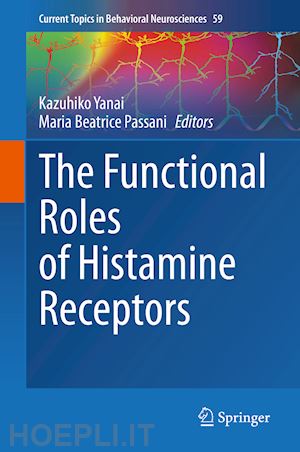
Questo prodotto usufruisce delle SPEDIZIONI GRATIS
selezionando l'opzione Corriere Veloce in fase di ordine.
Pagabile anche con Carta della cultura giovani e del merito, 18App Bonus Cultura e Carta del Docente
A better understanding of receptor intra-and interspecies heterogeneity will certainly improve and accelerate the translation of experimental data into clinical practice. Also, the plethora of data on brain histamine is hinting at a fundamental role of this system as a hub that receives internal and peripheral stimuli to allocate the necessary excitation to specific brain circuits that preside the appropriate behavioral responses.
The aim of this book is to cover the most important aspects of histamine receptor function and pharmacology in the central nervous system and to provide a comprehensive overview of the preclinical and clinical advances made in recent decades and the exciting prospects for the future. It highlights the clinical areas where there is a great need for new therapeutic approaches and where novel histaminergic agents may be useful for personalized medicine.











Il sito utilizza cookie ed altri strumenti di tracciamento che raccolgono informazioni dal dispositivo dell’utente. Oltre ai cookie tecnici ed analitici aggregati, strettamente necessari per il funzionamento di questo sito web, previo consenso dell’utente possono essere installati cookie di profilazione e marketing e cookie dei social media. Cliccando su “Accetto tutti i cookie” saranno attivate tutte le categorie di cookie. Per accettare solo deterninate categorie di cookie, cliccare invece su “Impostazioni cookie”. Chiudendo il banner o continuando a navigare saranno installati solo cookie tecnici. Per maggiori dettagli, consultare la Cookie Policy.